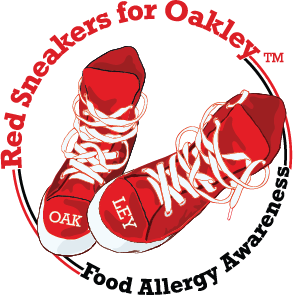Life-Saving Resources
Food Allergy
Awareness Handbook
Red Sneakers for Oakley is dedicated to educating and advocating for food allergy awareness and we need your help! Our Food Allergy Awareness Handbook outlines many ways you can get involved and help raise awareness about food allergies. It includes:
Powerful statistics
Great testimonials
Visuals & graphics to get people talking
Info about school initiatives & awareness events
Messages & images YOU can use on your social media
CLICK ON THE IMAGE ABOVE TO OPEN A DOWNLOADABLE & PRINTABLE VERSION.
NOTE: We are NOT medical professionals and this is NOT medical advice. This graphic is based on FARE’s Food Allergy & Anaphylaxis Emergency Care Plan (also available Spanish). The plan was revised by FARE’s Education Working Group, a multidisciplinary group of food allergy experts including support group leaders, two members of FARE’s Medical Advisory Board, experienced parents of children with food allergies, an adult with food allergies, a dietitian, psychologist and a school nurse. The plan was approved by FARE’s Medical Advisory Board.
Sharable Food Allergy Facts
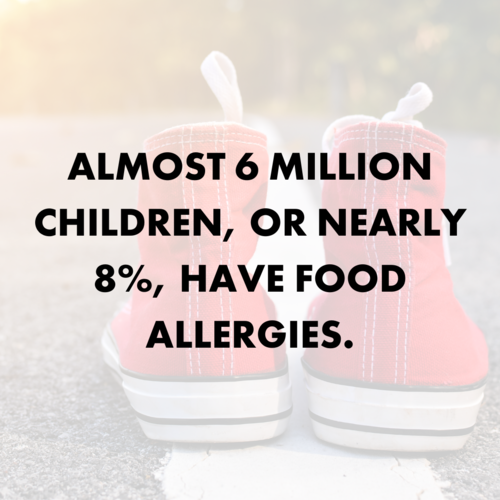

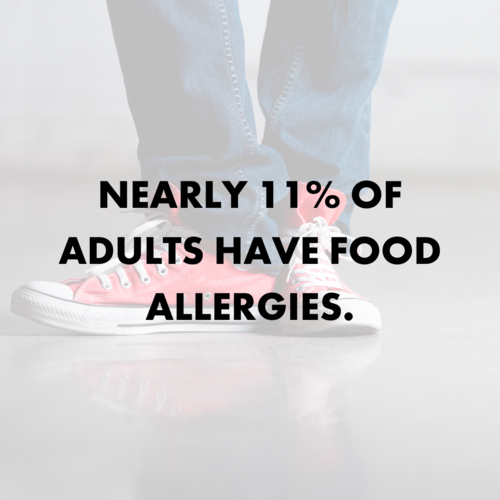
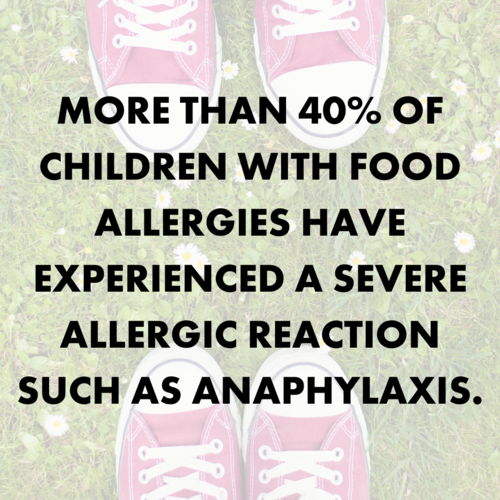
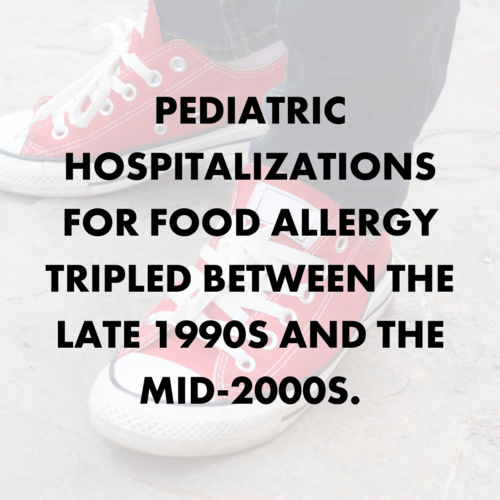
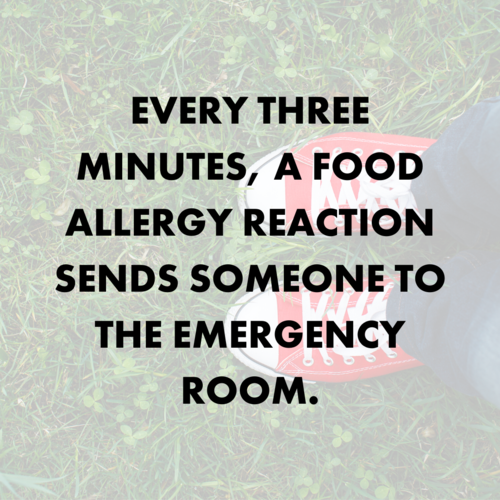
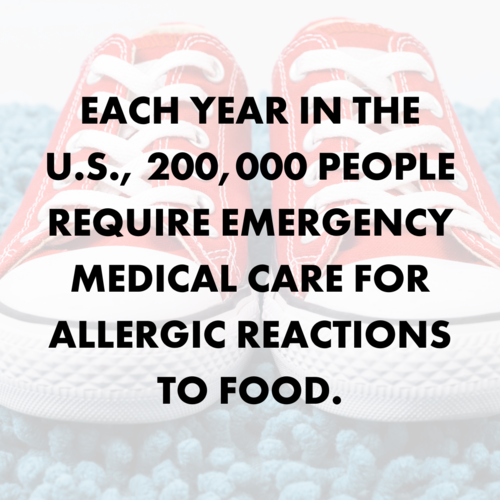

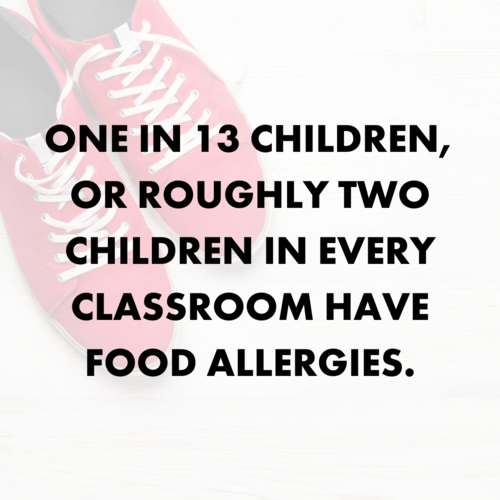
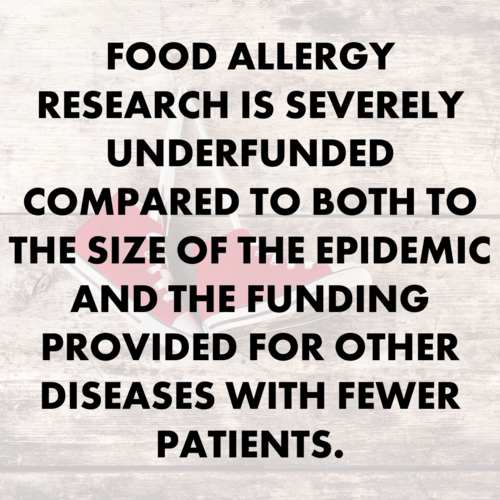


Find an Allergist Near You
Food Allergy FAQs
-
A food allergy is an immune system response to a food that the body mistakenly believes is harmful.
-
At this point, there are lots of theories, but it remains unclear. Family history appears to play a role in whether someone develops a food allergy. If you have other kinds of allergic reactions, like eczema or hay fever, you have a greater risk of food allergy. This is also true of asthma.
-
They can develop at any age. It’s not uncommon for adults to suddenly develop a food allergy to a food they’ve eaten their whole lives.
-
Yes. In extreme cases, food allergies can lead to anaphylaxis or even death. Read Oakley’s story here.
-
Allergic reactions to food can have many different symptoms, and an individual can experience different symptoms from one reaction to the next. Often, reactions start with skin symptoms, like hives or a rash, but many do not. More serious symptoms like a drop in blood pressure and trouble breathing can be life-threatening. Be sure to speak to your allergist to develop a Food Allergy & Anaphylaxis Emergency Care Plan. It’s important to be prepared. A complete list of symptoms of a food allergy reaction is available here.
-
No. Food allergies are related to the immune system and have the potential to be life-threatening. A food intolerance is when the body has trouble digesting a food. It can make a person feel bad, usually with an upset stomach, but it is not life-threatening.
-
People can be allergic to just about any food. In fact, more than 170 foods are known to cause food allergies. In the United States, the eight most common food allergens are milk, egg, peanut, tree nuts, soy, wheat, fish and shellfish. Sesame is widely considered to be the 9th most common food allergen.
-
Allergic reactions to food can have many different symptoms, and an individual can experience different symptoms from one reaction to the next. Often, reactions start with skin symptoms, like hives or a rash, but many do not. More serious symptoms like a drop in blood pressure and trouble breathing can be life-threatening. Be sure to speak to your allergist to develop a Food Allergy & Anaphylaxis Emergency Care Plan. It’s important to be prepared. A complete list of symptoms of a food allergy reaction is available here.
-
Even trace amounts of a food allergen may cause a reaction in some individuals with food allergies. While ingestion is the primary cause of severe reactions, in some cases, skin contact or breathing in a food protein (e.g., steam from cooking shellfish) can cause a reaction.
-
It depends. Symptoms can start as soon as a few minutes after eating a food and as long as a couple hours after. In some cases, after the first symptoms go away, a second wave of symptoms comes back several hours later. This is called a biphasic reaction. Biphasic reactions occur in about 20% of anaphylactic reactions. Up to one third of individuals who have had fatal or near fatal reactions experienced a biphasic reaction. This is why patients who have a severe reaction should stay at a hospital for four to six hours for observation.
-
It’s a serious allergic reaction that comes on quickly and may lead to death. Quick use of an epinephrine auto-injector is the primary treatment for anaphylaxis. We cannot stress enough: epi first, epi fast, then call 911. A complete list of the symptoms of anaphylaxis and more information are available here.
-
No. Antihistamines can potentially relieve some mild symptoms from an allergic reaction, such as an itchy mouth or hives, but they cannot stop the life-threatening symptoms of anaphylaxis. Epinephrine is the only first line treatment for anaphylaxis. Always carry two auto-injectors.
-
Not at all. Oakley had what his doctors called a “mild” food allergy. Someone whose reactions have been mild in the past may suddenly experience severe reactions that could be deadly.
-
When symptoms relating to two bodily systems manifest themselves after ingesting an allergen, use epinephrine. For example, hives along with vomiting, or hives with trouble breathing, are possible indicators of the onset of anaphylaxis. Here’s why it’s critical to always have two autoinjectors:
In some cases of anaphylaxis, one dose of epinephrine is often not enough. 35% of people may require a second injection.
A second allergic reaction, called biphasic anaphylaxis, can occur between 1 to 72 hours (typically eight hours) after the initial reaction. This happens in 20% of patients experiencing anaphylaxis.
Autoinjectors sometimes fail to deliver the full dose of epinephrine due to manufacturing defects. If the first auto-injector fails, use the second one.
There may have been a delay in administering, requiring an additional dose of epinephrine. There is clear evidence that failing to administer adrenaline as soon as anaphylaxis is suspected has contributed to fatal outcomes. Delayed injection of adrenaline can also increase the likelihood of a biphasic reaction.
-
Cofactors include: Exercise, acute infections, alcohol, drugs (NSAIDs, proton pump inhibitors, antacids), cannabis use, menstruation, extreme temperatures and humidity, psychological factors (e.g., emotional stress), and specific allergens like pollinosis.
Concomitant factors include: asthma, mastocytosis, cardiovascular disease
With the influence of these factors, food allergic reactions may be induced at lower doses of allergen and/or become more severe. Cofactors and augmenting factors may explain why, in some patients, food allergen exposure can cause anaphylaxis, while in other clinical scenarios, it can be tolerated or elicits a mild reaction. The so-called accompanying factors may explain why an allergen can either be tolerated or trigger a mild reaction or, in the same patients, induce severe anaphylaxis. According to published data, the presence of those accompanying factors occurs in up to 30% of episodes of anaphylaxis.
-
The short answer is: we’re not sure. The CDC has reported a 50 percent increase in the number of children with food allergies since the late 1990s. There are many theories as to why the number of people with food allergies is growing, but scientific research has not yet found the cause.
-
It depends on the allergen and the individual. Peanut, tree nut, fish and shellfish allergies generally are lifelong. Milk, egg, wheat and soy allergies usually begin in childhood and are more likely to be outgrown.
-
No. Currently, there is no cure. Strict avoidance of the food allergen is the only way to prevent a reaction and an epinephrine auto-injector is the only medicine to help stop anaphylaxis.
Support Allergy Sensitive Food Initiatives
We encourage restaurants to take the proper precautions in identifying the major food allergens on their menus, because there is too much at risk. The red sneakers logo can symbolize the restaurant’s taking responsibility and demonstrate their sensitivity to people suffering with food allergies. We also support influencers who pioneer allergy-conscious cooking through considerate recipes.
FAACT
Whether you are newly diagnosed or a long-time member of the allergy community, FAACT is your home for education, advocacy, and connections with other parents and adults affected by food allergies and life-threatening anaphylaxis.
FAACT's mission is to educate, advocate, and raise awareness for all individuals and families affected by food allergies and life-threatening anaphylaxis. Whether it’s keeping children safe at school, responding to food allergy bullying, traveling, preparing for college, dealing with workplace issues, or simply taking the family out for dinner, FAACT has the facts you need to manage food allergies and stay healthy. FAACT is your voice for food allergy awareness.
FARE
Food Allergy Research & Education (FARE) enhances the lives of individuals with food allergies empowering them to lead safe, productive lives with the respect of others through education and advocacy initiatives and improved awareness around healthcare options and treatment.
FARE’s mission is simple - Improving the LIFE and HEALTH of the 32 million Americans with food allergies and providing HOPE for the promise of new treatments. FARE has turned over $100 million in donor gifts into ground-breaking research and has provided a voice for the community, advocating on its behalf and offering hope for a better tomorrow.
